
Knitting is not just for scarves and sweaters. It is a versatile craft that can be adapted for various projects, including those in the kitchen. In this article, we will explore the world of kitchen knitting patterns and discover how you can use your knitting skills to create beautiful and functional items for your kitchen.
From dishcloths and potholders to oven mitts and trivets, kitchen knitting patterns offer a wide range of projects to suit every skill level. Whether you are a beginner knitter looking for a simple project or an experienced knitter eager to challenge yourself with intricate designs, there is something for everyone.
One of the benefits of kitchen knitting patterns is that they are often quick to complete. Unlike larger projects like sweaters or blankets that can take weeks or even months to finish, many kitchen knitting patterns can be completed in just a few hours. This means you can enjoy the satisfaction of completing a project relatively quickly and start using your knitted items right away.
In addition to being practical, kitchen knitting patterns also allow you to add a personal touch to your kitchen. By choosing your own colors and textures, you can create items that match your kitchen decor and reflect your personal style. Knitted dishcloths, for example, can be made in a variety of patterns and colors to add a pop of color to your sink area.
Kitchen Knitting Patterns
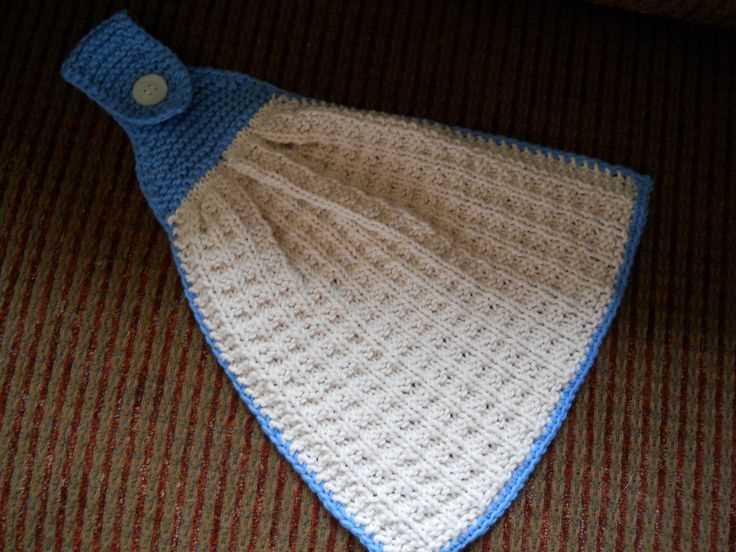
If you love both knitting and spending time in the kitchen, then kitchen knitting patterns are the perfect way to combine your hobbies. These patterns allow you to create practical and beautiful items for your kitchen while also enjoying the therapeutic benefits of knitting.
One popular kitchen knitting pattern is the dishcloth pattern. Dishcloths are a great way to practice new knitting techniques, as they are small and quick to make. You can experiment with different stitch patterns and colors to create a set of unique dishcloths for your kitchen. Not only are dishcloths functional for washing dishes, but they can also add a touch of style to your kitchen decor.
Another kitchen knitting pattern that is gaining popularity is the pot holder pattern. Pot holders are essential kitchen items that help protect your hands from hot pots and pans. By knitting your own pot holders, you can customize them to match your kitchen decor and choose the perfect thickness and size for your needs. Plus, knitting pot holders is a great way to use up leftover yarn from other projects.
In addition to dishcloths and pot holders, you can also find patterns for items such as oven mitts, placemats, and even aprons. These kitchen knitting patterns allow you to create a cohesive and personalized look for your kitchen while also adding your own unique touch to everyday essentials.
When choosing kitchen knitting patterns, it’s important to consider the materials you use. Opt for cotton or linen yarns, as they are durable and easy to clean. Additionally, consider using natural fibers that are heat resistant for patterns such as pot holders and oven mitts. This will ensure that your handmade items are not only beautiful but also functional and long-lasting.
If you’re looking for a new knitting project and want to add a personal touch to your kitchen, kitchen knitting patterns are the perfect choice. Whether you’re making dishcloths, pot holders, or other kitchen essentials, you’ll enjoy the process of creating something beautiful and functional for your home.
What are Kitchen Knitting Patterns?
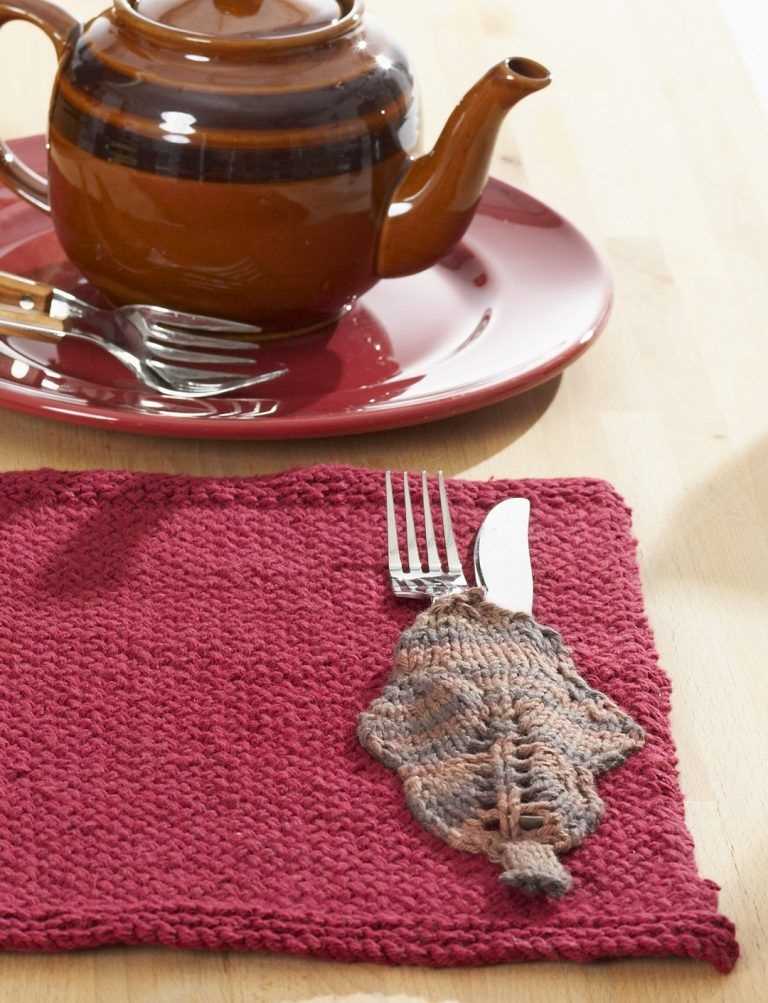
Kitchen knitting patterns are a unique and creative way to incorporate knitting into everyday kitchen items. With these patterns, you can knit a variety of functional and decorative items for your kitchen, including dishcloths, pot holders, oven mitts, and even kitchen towels.
These patterns usually involve using durable and absorbent materials, such as cotton or linen yarn, to create practical items that can withstand daily use in the kitchen. They often feature different stitches and patterns to add texture and visual interest to the finished products.
One popular type of kitchen knitting pattern is the dishcloth pattern. Dishcloths are versatile and can be used for a variety of purposes, including washing dishes, wiping countertops, or even as decorative elements in your kitchen. Kitchen knitting patterns for dishcloths often incorporate simple but interesting stitch patterns to add texture and functionality to the finished product.
Another common kitchen knitting pattern is for pot holders and oven mitts. These patterns usually involve using thick and heat-resistant yarn to create items that can protect your hands from hot pots and pans. They often incorporate special techniques, such as double knitting or stranded colorwork, to add extra insulation and durability.
In addition to dishcloths and pot holders, kitchen knitting patterns can also include patterns for knitted kitchen towels, aprons, and even decorative items like coasters or mug cozies. The possibilities are endless, and you can let your creativity run wild when it comes to knitting for your kitchen.
Benefits of Using Kitchen Knitting Patterns
Knitting is a popular craft that allows people to create beautiful and functional items using just a pair of needles and a ball of yarn. While there are countless knitting patterns available, using kitchen knitting patterns can be especially beneficial. These patterns are specifically designed for creating items that are useful in the kitchen, such as dishcloths, potholders, and even aprons. Here are some of the benefits of using kitchen knitting patterns:
- Versatility: Kitchen knitting patterns offer a wide range of options, allowing you to create various items for your kitchen. Whether you need new dishcloths or want to make a unique table runner, kitchen knitting patterns have you covered.
- Customization: With kitchen knitting patterns, you have the ability to customize your creations to suit your specific needs and preferences. You can choose the yarn color and texture that matches your kitchen decor or add personal touches like embroidered designs.
- Practicality: Knitted kitchen items are not only beautiful but also practical. Kitchen knitting patterns often feature designs that are specifically created to be durable and functional. For example, dishcloths made with certain stitch patterns can provide better scrubbing power, making them ideal for cleaning dishes and countertops.
- Cost-effectiveness: Making your own kitchen items using knitting patterns can be a cost-effective option. Instead of purchasing expensive dishcloths or oven mitts, you can create your own using affordable materials. Additionally, knitting is a long-lasting craft, so the items you make can be used for years to come.
Overall, using kitchen knitting patterns allows you to unleash your creativity while creating practical and beautiful items for your kitchen. Whether you are a beginner or an experienced knitter, these patterns provide an opportunity to add a personal touch to your cooking and baking space.
Popular Kitchen Knitting Patterns
If you love knitting and spending time in the kitchen, why not combine your two passions with some popular kitchen knitting patterns? Knitting can be a fun and rewarding hobby, and creating items for your kitchen can add a personal touch to your cooking and baking experiences. Whether you’re a beginner or an experienced knitter, there are plenty of patterns to choose from that can help you create functional and stylish items for your kitchen.
One popular kitchen knitting pattern is the dishcloth. Dishcloths are versatile and practical, making them a great project for knitters of all skill levels. They can be used for washing dishes, wiping countertops, or even as decorative elements in your kitchen. You can experiment with different stitch patterns and colors to create unique and visually appealing dishcloths. They also make great gifts for friends and family members who appreciate handmade items.
Aprons, Pot Holders, and Oven Mitts
If you enjoy cooking and baking, knitting an apron, pot holders, or oven mitts can be a rewarding project. Aprons not only protect your clothes but can also bring a touch of vintage charm to your kitchen. Pot holders and oven mitts are essential for handling hot pans and dishes, and knitting your own allows you to customize the size and design to fit your needs. With the wide range of yarn options available, you can create items that are not only functional but also stylish and unique.
Table and Kitchen Decor
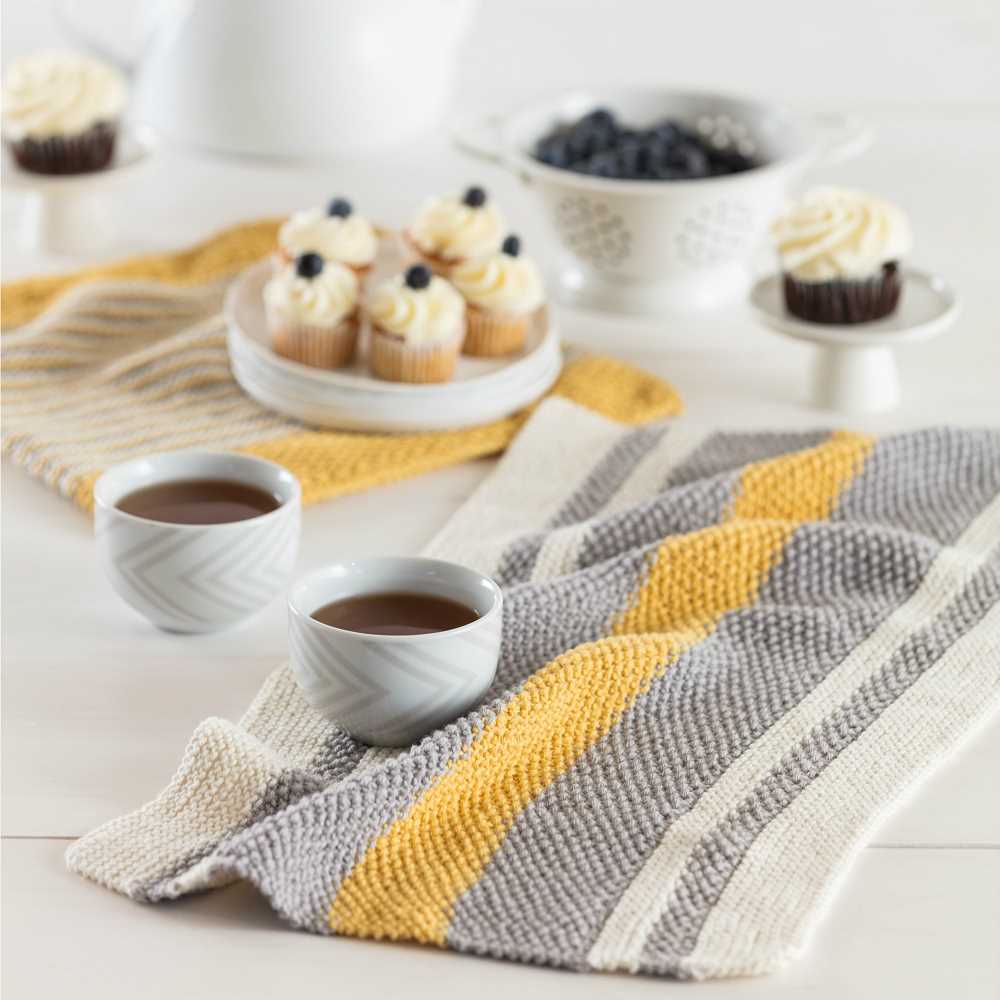
Another area where knitting can add a personal touch to your kitchen is in the realm of table and kitchen decor. Coasters, placemats, and napkin rings are all items that can be knit to match your style and color scheme. These small projects can be completed relatively quickly and are a great way to practice new knitting techniques. Whether you prefer simple and elegant designs or intricate patterns, there are endless possibilities for adding a handmade touch to your kitchen.
Overall, knitting can be a great way to infuse your kitchen with warmth and personal style. By creating functional and decorative items using popular kitchen knitting patterns, you can add a unique touch to your cooking and baking experiences. So grab your knitting needles and dive into the world of kitchen knitting – you may be surprised at what you can create!
How to Choose the Right Yarn for Kitchen Knitting Patterns
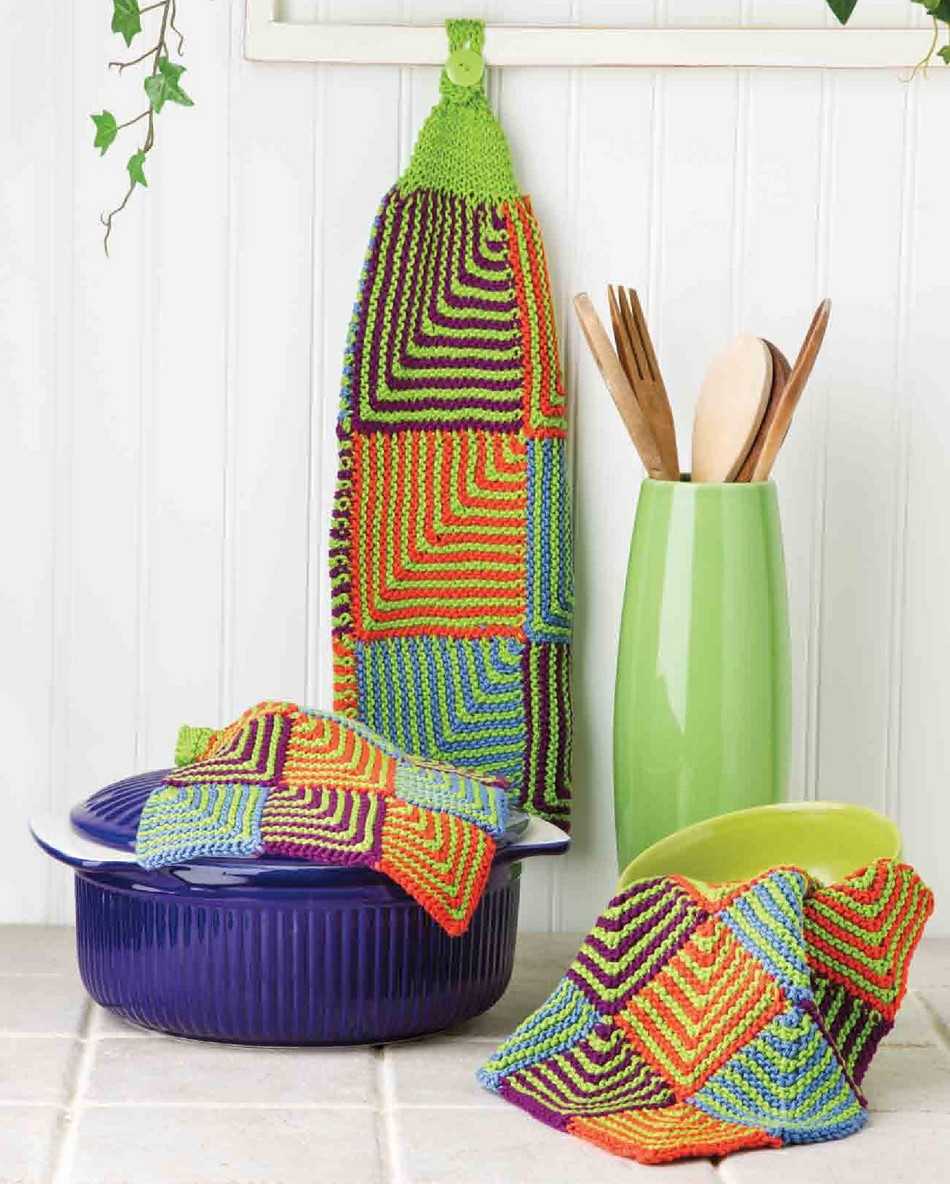
When it comes to kitchen knitting patterns, choosing the right yarn is essential. The yarn you select can make a big difference in the final outcome and durability of your kitchen accessories. Here are some tips to help you choose the perfect yarn for your kitchen knitting projects:
Fiber Content:
Consider using yarn that is made from natural fibers, such as cotton or linen, for kitchen knitting patterns. These fibers are highly absorbent, durable, and heat-resistant, making them perfect for items like dishcloths, pot holders, and kitchen towels. Synthetic fibers, like acrylic, may not hold up as well in the kitchen environment and can be less absorbent.
Weight and Texture:
Choose a yarn weight and texture that suits the specific kitchen knitting pattern you’re working on. Lighter weight yarns are great for delicate items like coasters or place mats, while heavier weight yarns work well for items that require more durability, like oven mitts or trivets. Consider the texture of the yarn as well – smooth yarns are great for dishcloths, while textured or bumpy yarns can add interest and grip to pot holders or hot pads.
Color:
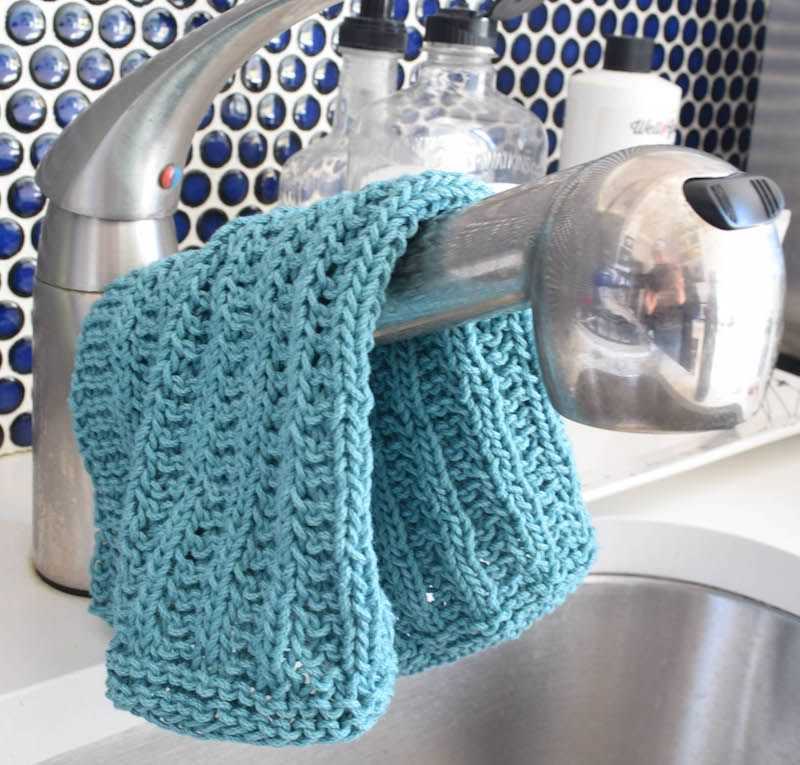
While the color of the yarn may not affect the functionality of your kitchen accessories, it can certainly add a personal touch and aesthetic appeal. Consider the color scheme of your kitchen and choose yarn colors that complement it. Bright and vibrant colors can add a pop of personality, while neutral tones can create a more subtle and classic look.
Ease of Care:
Think about the ease of care when selecting yarn for kitchen knitting patterns. Items in the kitchen tend to get dirty easily, so it’s important to choose yarn that is easy to clean and maintain. Look for yarn that is machine washable and dryable, or can be easily hand washed. This will ensure that your knitted kitchen accessories stay looking fresh and clean for years to come.
By considering the fiber content, weight and texture, color, and ease of care, you can choose the perfect yarn for your kitchen knitting patterns. With the right yarn, your kitchen accessories will not only be functional, but also beautiful additions to your culinary space.
Essential Knitting Techniques for Kitchen Knitting Patterns
Knitting is a versatile craft that can be used to create not only garments and accessories but also practical items for the kitchen. If you’re interested in adding a personal touch to your kitchen decor, learning a few essential knitting techniques can help you create beautiful and functional kitchen knitting patterns.
Casting On: The first step in any knitting project is casting on. This technique forms the foundation row of stitches and sets the stage for the rest of your pattern. When knitting for the kitchen, consider using a stretchy cast-on method such as the long tail cast-on to allow for easy stretching and movement in your finished project.
Garter Stitch: The garter stitch is one of the simplest and most versatile knitting stitches. It is created by knitting every row, resulting in a textured fabric that lies flat and doesn’t curl at the edges. This stitch is ideal for creating dishcloths, pot holders, and other kitchen items that require a durable and absorbent fabric.
Increases and Decreases: Adding or subtracting stitches from your knitting allows you to shape your projects and create interesting patterns. Common increases include yarn overs and make-one stitches, while common decreases include knit two together and slip-slip-knit. These techniques are useful for creating shaping in items like kitchen towels, oven mitts, and aprons.
Colorwork: Adding color to your kitchen knitting patterns can create eye-catching designs and add a touch of personalization. Colorwork techniques such as stranded knitting, intarsia, and duplicate stitch can be used to incorporate stripes, geometric patterns, or even pictures into your kitchen items. Consider using contrasting colors to make your designs pop.
Finishing Techniques: Once you’ve completed your knitting project, it’s important to finish it off neatly. Techniques such as binding off, seaming, and blocking can help you achieve a professional-looking finish. For kitchen items that will be exposed to heat or moisture, consider adding a lining or backing to protect the knitting and ensure its longevity.
By mastering these essential knitting techniques, you’ll be well-equipped to create a variety of beautiful and functional kitchen knitting patterns. Whether you’re knitting dishcloths, pot holders, or decorative items, the possibilities are endless. So grab your knitting needles and start exploring the wonderful world of kitchen knitting!
Knitting Tools and Supplies for Kitchen Knitting Patterns
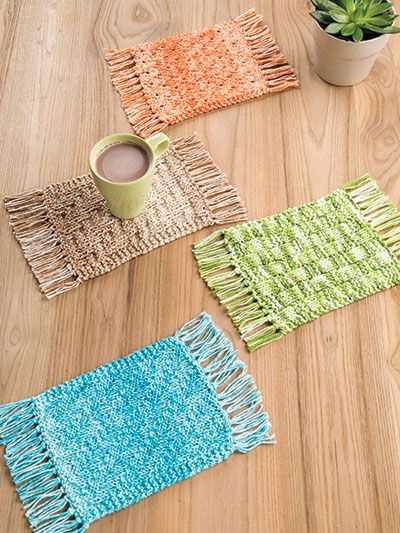
When it comes to knitting patterns for the kitchen, having the right tools and supplies is essential. Whether you are knitting dishcloths, pot holders, or other kitchen accessories, here are some key items you will need:
1. Knitting Needles
Choose knitting needles in the appropriate size for your project. For kitchen knitting patterns, a medium-sized needle with a length of around 8 to 10 inches is usually suitable. Consider using bamboo or wooden needles, as they can be gentler on your hands and prevent stitches from slipping.
2. Yarn
Select yarn that is suitable for kitchen use. Cotton yarn is a popular choice, as it is durable, absorbent, and can withstand frequent washing. Look for yarns labeled as “dishcloth cotton” or “kitchen cotton” for the best results. Consider using multiple colors to create interesting patterns or designs.
3. Stitch Markers
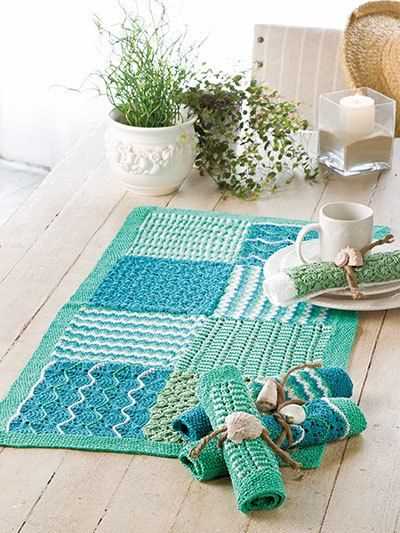
Stitch markers can be helpful when working on more complex kitchen knitting patterns. They can help you keep track of important stitch counts or pattern repeats, ensuring that your finished project turns out as intended. Choose markers that are easy to remove or slide along the needles as needed.
4. Tapestry Needle
A tapestry needle, also known as a yarn needle, is essential for weaving in loose ends and finishing touches on your kitchen knitting projects. Look for a needle with a large eye that can accommodate the thickness of your yarn. It should also have a blunt tip to prevent splitting the yarn.
5. Scissors
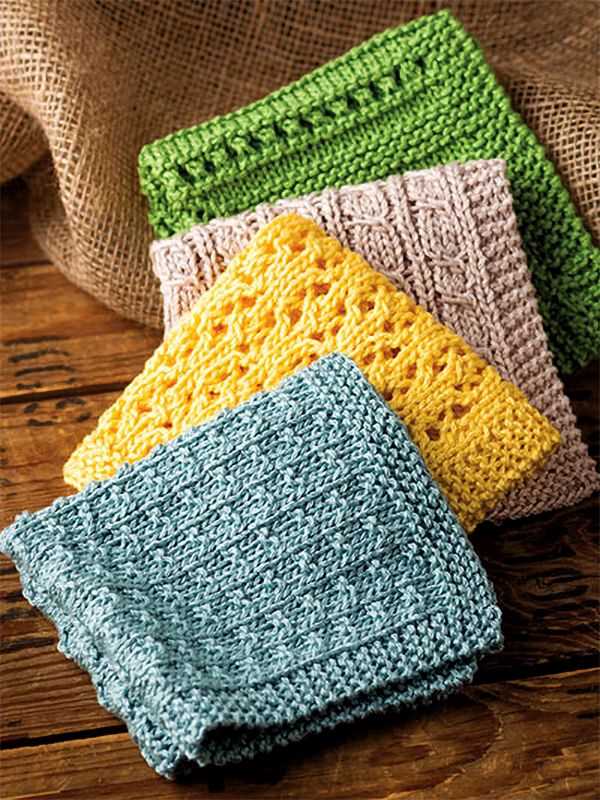
A pair of small, sharp scissors is necessary for cutting yarn and trimming loose ends. Keep them handy while you work to easily snip yarn as needed. Opt for scissors with a comfortable grip and a pointed tip for precision cutting.
By having these knitting tools and supplies on hand, you will be well-equipped to tackle any kitchen knitting pattern that catches your eye. From practical dishcloths to decorative pot holders, you can create beautiful and functional pieces for your kitchen with ease.
Tips and Tricks for Successful Kitchen Knitting
Knitting in the kitchen can be a fun and productive way to pass the time while waiting for food to cook or during breaks from cooking. Whether you’re an experienced knitter or just starting out, here are some tips and tricks to help you make the most of your kitchen knitting experience.
1. Choose the Right Yarn
When knitting in the kitchen, it’s important to choose a yarn that can withstand the heat and moisture of the kitchen environment. Opt for natural fibers such as cotton or linen, which are known for their durability and ability to absorb moisture. Avoid using yarns that are prone to shrinking or melting, such as acrylic or nylon.
2. Keep Your Knitting Clean
As you knit in the kitchen, it’s important to keep your work clean to avoid any contamination. Before you start knitting, make sure to wash your hands thoroughly to remove any grease or food particles. If you’re working with food or messy ingredients, consider covering your knitting with a clean cloth or plastic wrap to protect it from spills and stains.
3. Use Small, Portable Projects
Kitchen knitting is all about convenience, so it’s best to choose small and portable projects that are easy to carry around and work on. Socks, dishcloths, and small accessories like coasters or pot holders are great options for kitchen knitting. These projects are quick to complete and can be easily tucked away when you need to focus on cooking.
4. Find the Perfect Spot
When knitting in the kitchen, it’s important to find a comfortable and convenient spot to work. Look for a spot with good lighting and enough space to spread out your knitting. You may also want to consider setting up a small knitting station with a basket or organizer to keep your supplies and projects within reach.
5. Take Advantage of Downtime
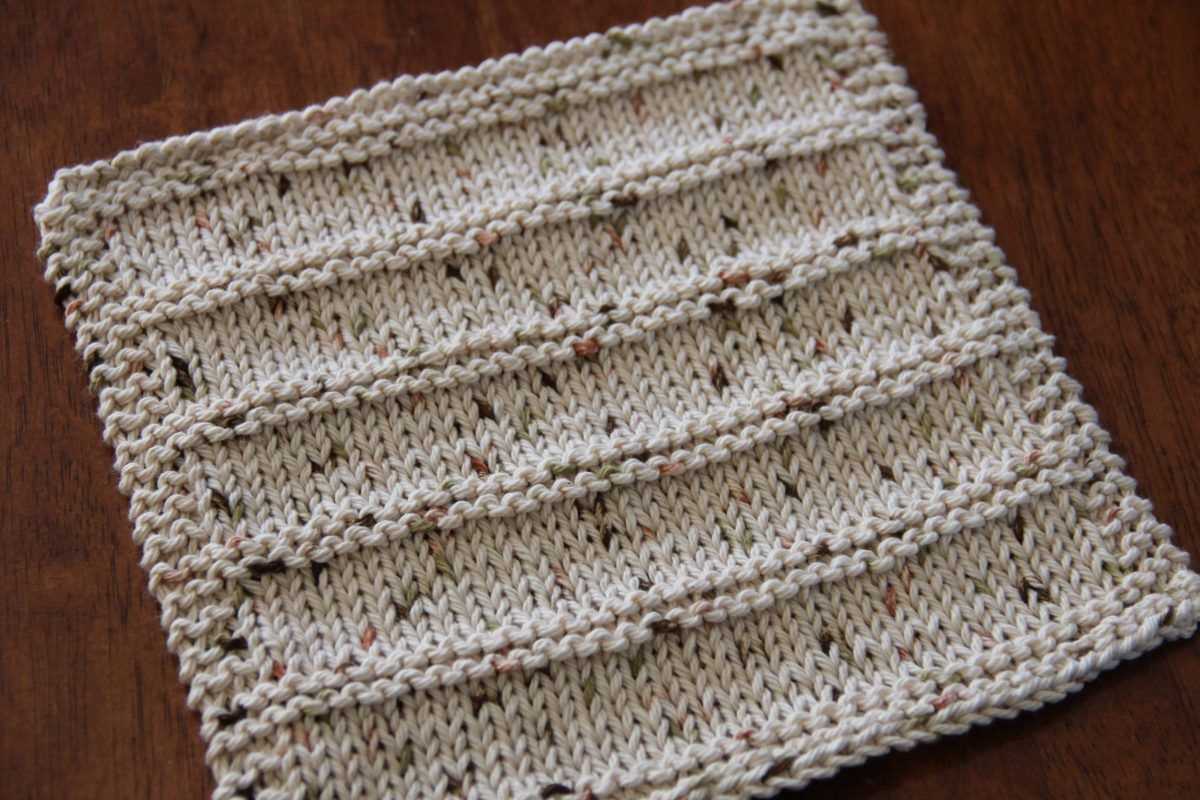
Kitchen knitting is a great way to make the most of your downtime in the kitchen. Use the time when you’re waiting for water to boil or food to simmer to get some stitching done. These small pockets of time can add up and help you make progress on your knitting projects, even when you’re busy with cooking.
By following these tips and tricks, you can make your kitchen knitting experience more enjoyable and productive. So grab your needles and yarn, and start knitting away in the heart of your home!
How to Customize Kitchen Knitting Patterns to Fit Your Style
Knitting is not only a practical skill but also a creative outlet. With kitchen knitting patterns, you can create unique and personalized items that reflect your style and taste. Whether you prefer bold colors or subtle designs, here are some tips on how to customize kitchen knitting patterns to fit your style.
Choose the Right Yarn:
One of the first and most important steps in customizing a knitting pattern is selecting the right yarn. Consider the texture, weight, and color of the yarn to match your desired style. If you prefer a rustic and vintage look, opt for natural fibers like wool or cotton. For a modern and sleek style, choose yarn with a smooth and shiny finish.
Create Your Own Stitch Patterns:
While kitchen knitting patterns often come with suggested stitch patterns, don’t be afraid to experiment and create your own. Knitting allows for endless possibilities, so try different stitch combinations or modify existing patterns to match your style. You can add lacework, cables, or even incorporate different colors for a more unique design.
Add Personal Touches:
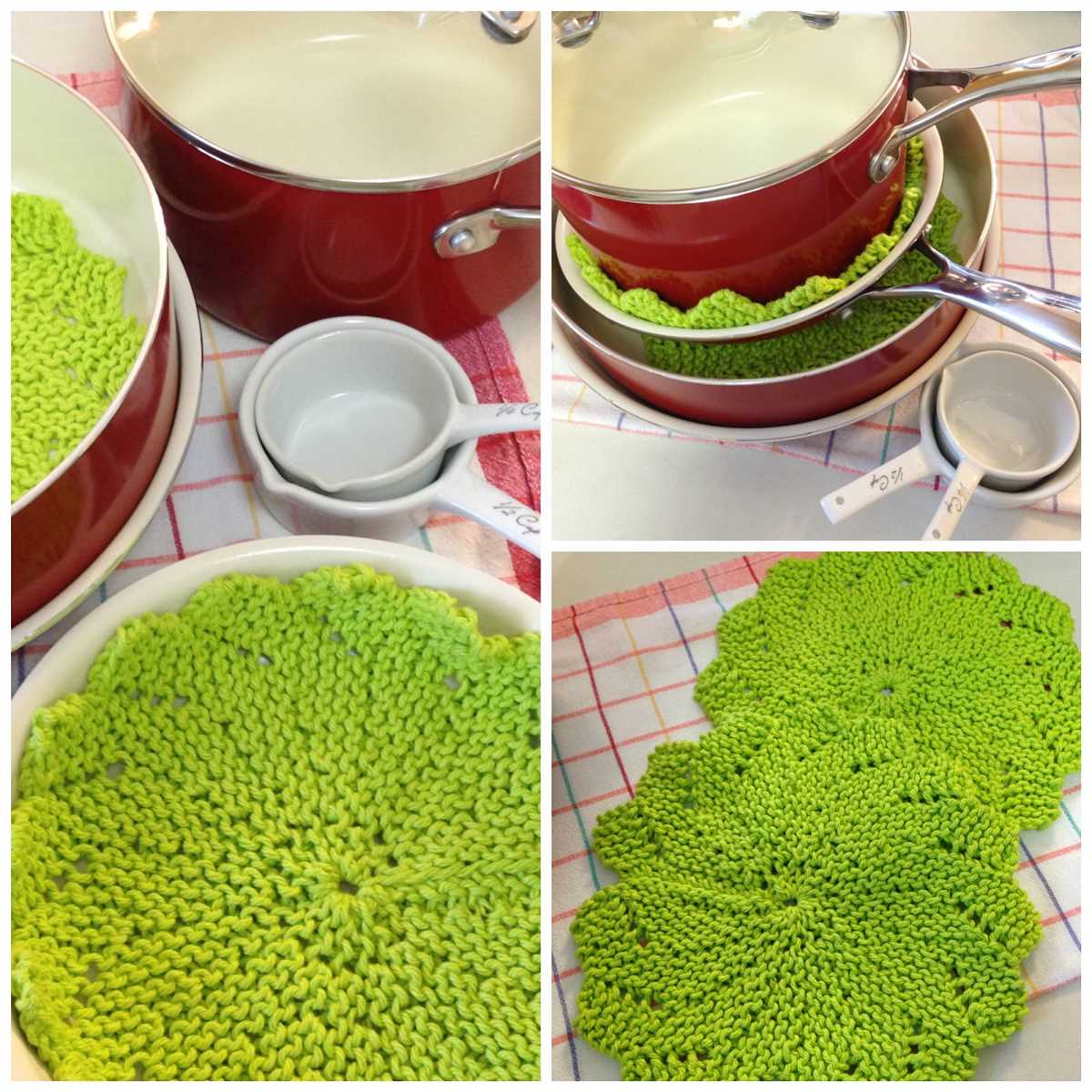
If you want to further personalize your kitchen knitting projects, consider adding some personal touches. You can embroider your initials or name, attach buttons or beads, or even sew on a fabric applique. These small details can make a big difference and showcase your individuality.
Explore Different Shapes and Sizes:
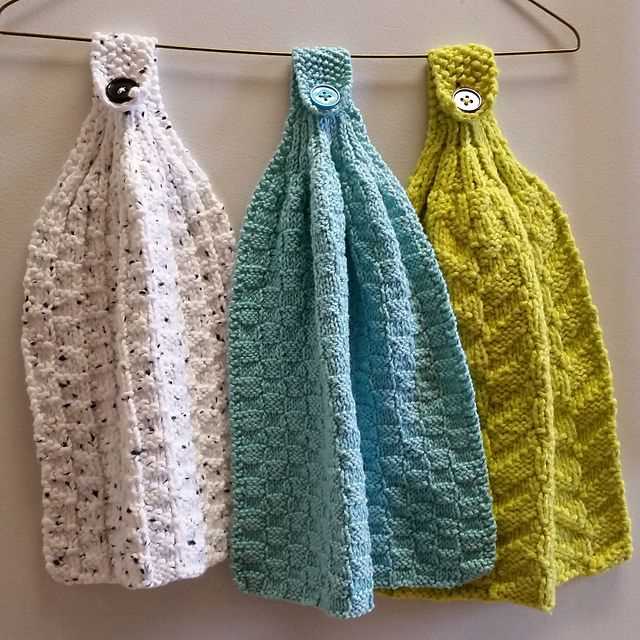
Not all kitchen knitting patterns have to be limited to a standard shape or size. If you prefer larger dishcloths or smaller coasters, feel free to customize the dimensions to fit your needs. You can easily adjust the pattern instructions to achieve the desired size and shape.
Combine Patterns:
If you can’t find a kitchen knitting pattern that perfectly matches your style, don’t hesitate to combine multiple patterns. You can mix and match different stitch patterns or combine elements from various patterns to create your own unique design. This way, you can truly make the item your own.
Remember, knitting is a versatile craft that allows you to unleash your creativity. By customizing kitchen knitting patterns to fit your style, you can proudly display your handmade items in your kitchen and add a personal touch to your home decor.
Knitting Projects for a Cozy Kitchen
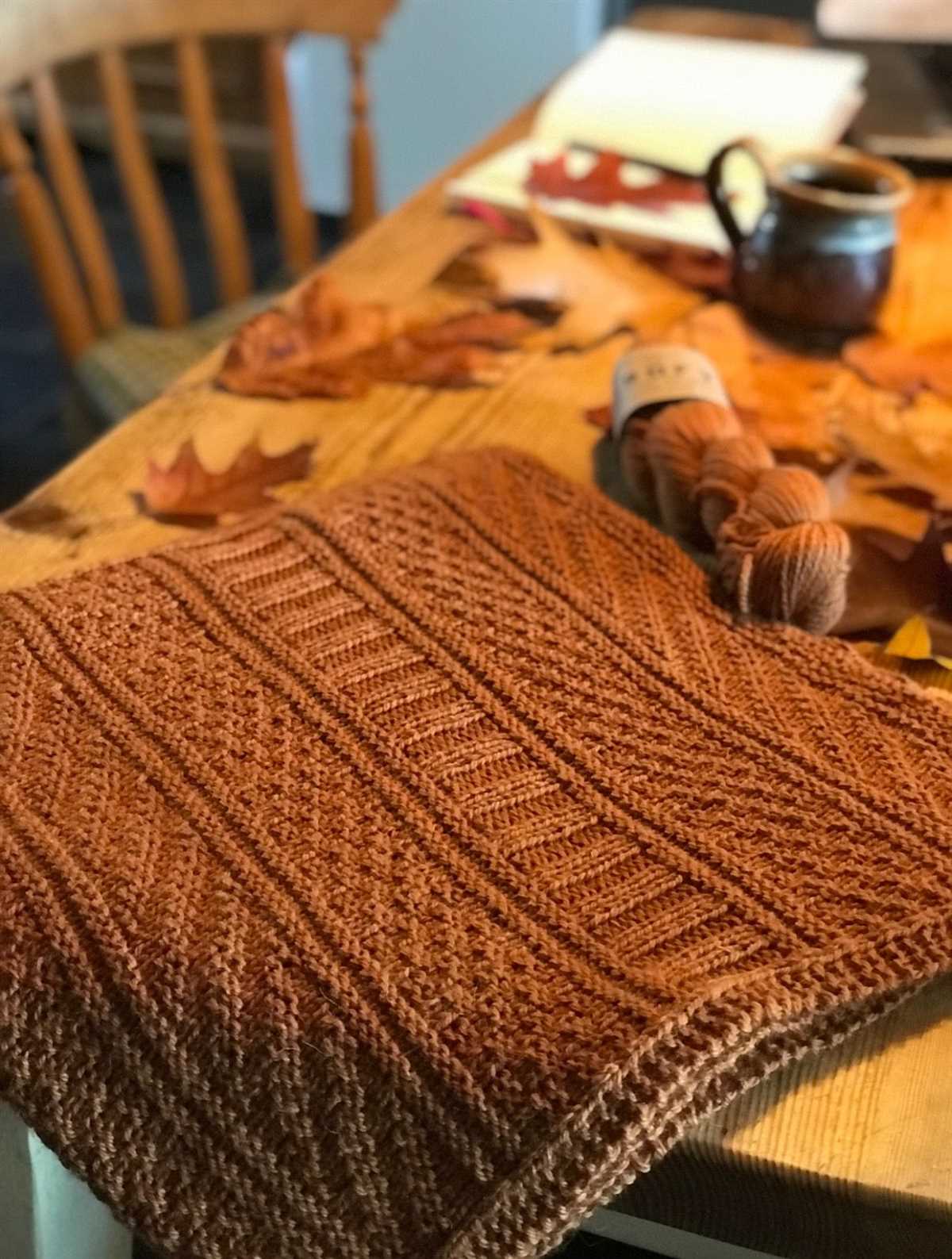
If you love knitting and spending time in the kitchen, why not combine the two hobbies? Knitting projects for a cozy kitchen can add a touch of warmth and style to your cooking space. Whether you’re looking to make practical items or decorative pieces, there are plenty of knitting patterns to choose from.
Dishcloths and Pot Holders: One of the most popular knitting projects for the kitchen is dishcloths and pot holders. These practical items are not only easy to make, but also make great gifts. Knitting your own dishcloths and pot holders allows you to customize the patterns and colors to match your kitchen decor.
- Try knitting dishcloths in a textured stitch pattern for better scrubbing power.
- When it comes to pot holders, choose a thicker yarn for better heat resistance.
- Consider knitting a set of matching dishcloths and pot holders for a coordinated look in your kitchen.
Tea Cozies: If you’re a tea lover, knitting a tea cozy can add a touch of charm to your tea time. A tea cozy is a knitted cover that fits over a teapot to keep the tea warm for longer. There are endless possibilities when it comes to tea cozy patterns, from simple and classic designs to more intricate and whimsical ones.
- Choose a yarn that is both insulating and washable.
- Consider adding a lining to your tea cozy for extra insulation.
- Personalize your tea cozy with buttons, ribbons, or other decorative elements.
Potholders and Oven Mitts: Protecting your hands from hot pots and pans is essential in any kitchen. Knitting your own potholders and oven mitts allows you to create customized designs that reflect your personal style. Look for patterns that use a thick, heat-resistant yarn and consider adding a layer of insulation for extra protection.
| Potholders | Oven Mitts |
|---|---|
| Choose smaller, square patterns for potholders. | Opt for patterns that include thumb shaping for a better fit. |
| Consider adding a hanging loop to your potholders for easy storage. | Experiment with different stitch patterns to add texture and style. |
| Don’t forget to test the yarn for heat resistance before using your potholders. | Pay attention to the length of the mitt to ensure it covers your wrist for maximum protection. |
With these knitting projects, you can create a cozy and personalized kitchen that reflects your love for both knitting and cooking. So grab your knitting needles and start stitching your way to a beautiful and functional kitchen!
Beginner-Friendly Kitchen Knitting Patterns
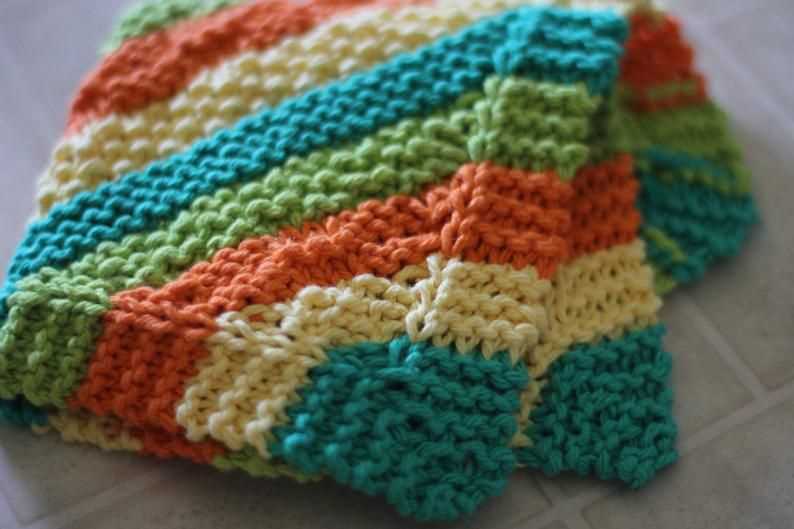
If you’re a beginner knitter, you may be looking for simple and easy projects to practice your skills. The kitchen is a great place to start, as there are plenty of practical and useful items you can knit. Plus, knitting in the kitchen allows you to give your creations a personal touch.
Kitchen Dishcloths: Dishcloths are one of the most popular beginner knitting projects. They are small, quick to make, and don’t require a lot of yarn. Knitting dishcloths is a great way to practice basic stitches like knit and purl. Plus, they are useful for cleaning up messes in the kitchen.
Hot Pads: Another beginner-friendly project is knitting hot pads or trivets. These are perfect for setting hot pots and pans on without damaging your countertops. You can use thick and heat-resistant yarn to ensure that they can withstand high temperatures. Plus, you can get creative with different patterns and colors.
Utensil Holders: Knitting utensil holders is a fun and practical project. You can customize the size and design to fit your kitchen tools perfectly. They are great for keeping your spoons, spatulas, and whisks organized and within reach while cooking. Plus, they make a lovely addition to your kitchen decor.
Pot Holders: Pot holders are another great beginner project that serves both a practical and decorative purpose. You can knit them with a thick and heat-resistant yarn to protect your hands when handling hot pots and pans. Choosing fun colors and patterns can add a touch of style to your kitchen.
Table Napkin Rings: Knitting napkin rings is a simple and quick project that can add a touch of elegance to your dining table. You can use a thin and soft yarn to give them a delicate and refined look. They are perfect for special occasions or when you want to impress your guests.
Advanced Kitchen Knitting Patterns for Experienced Knitters
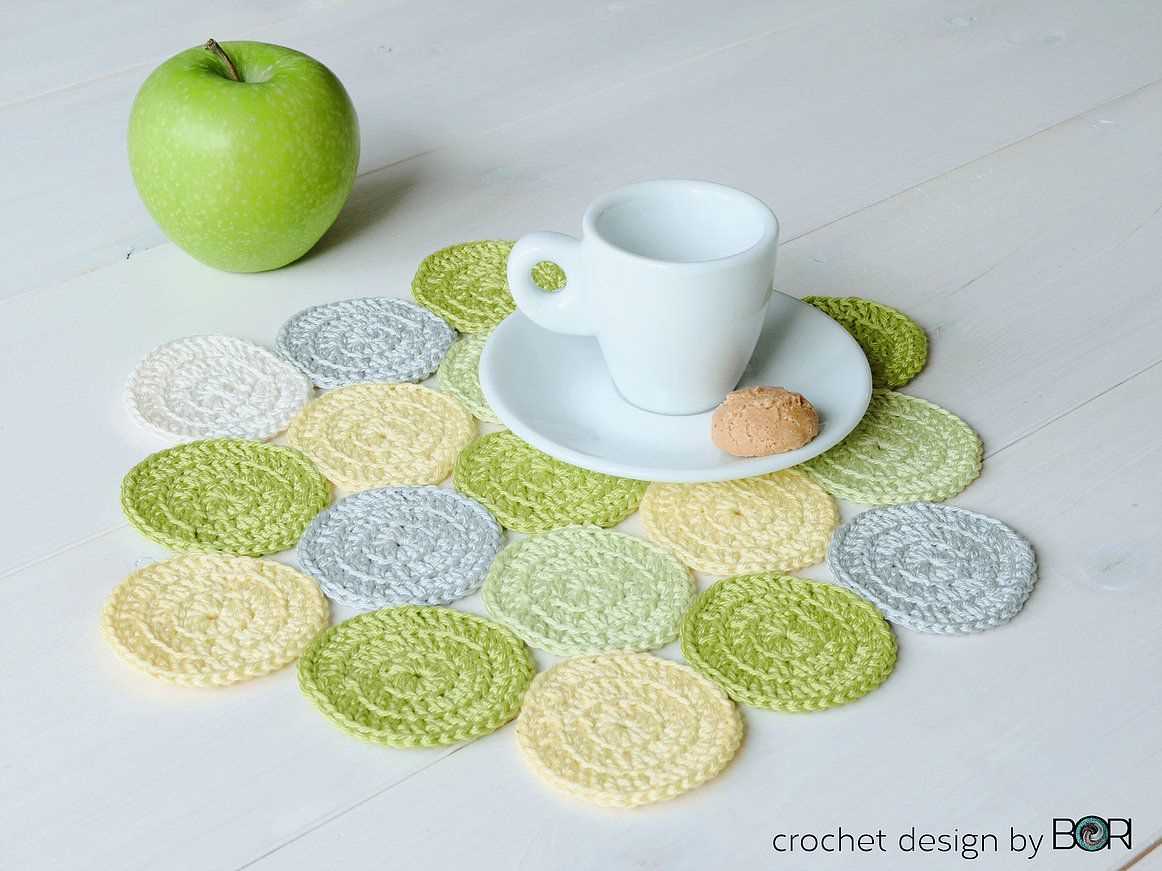
If you’re an experienced knitter looking for a new and exciting challenge, advanced kitchen knitting patterns are perfect for you! These patterns go beyond the basics and allow you to create unique and intricate designs that will impress everyone who sees them.
One of the most popular advanced kitchen knitting patterns is the cable stitch tea cozy. This pattern requires you to have a good understanding of cable knitting techniques. The result is a cozy and stylish cover for your teapot that is sure to be a conversation starter at your next tea party.
Knitting Patterns for Kitchen Accessories
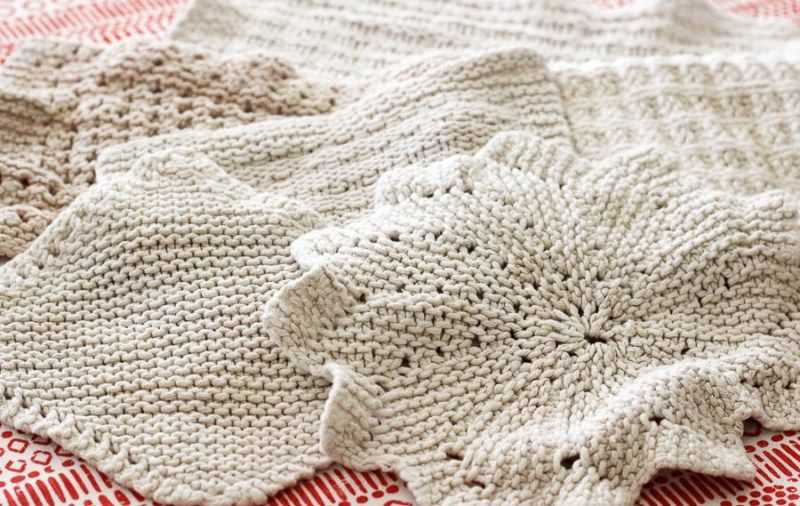
Another advanced knitting pattern for the kitchen is the lace dishcloth. This pattern combines lace knitting techniques with the practicality of a dishcloth. The result is a delicate and beautiful cloth that is both functional and decorative. It’s perfect for adding a touch of elegance to your kitchen.
If you’re looking to challenge yourself even further, the colorwork potholders are an excellent choice. This pattern requires you to work with multiple colors and create intricate patterns using stranded knitting techniques. The end result is a set of stunning and durable potholders that will brighten up your kitchen.
Advanced Kitchen Knitting Patterns
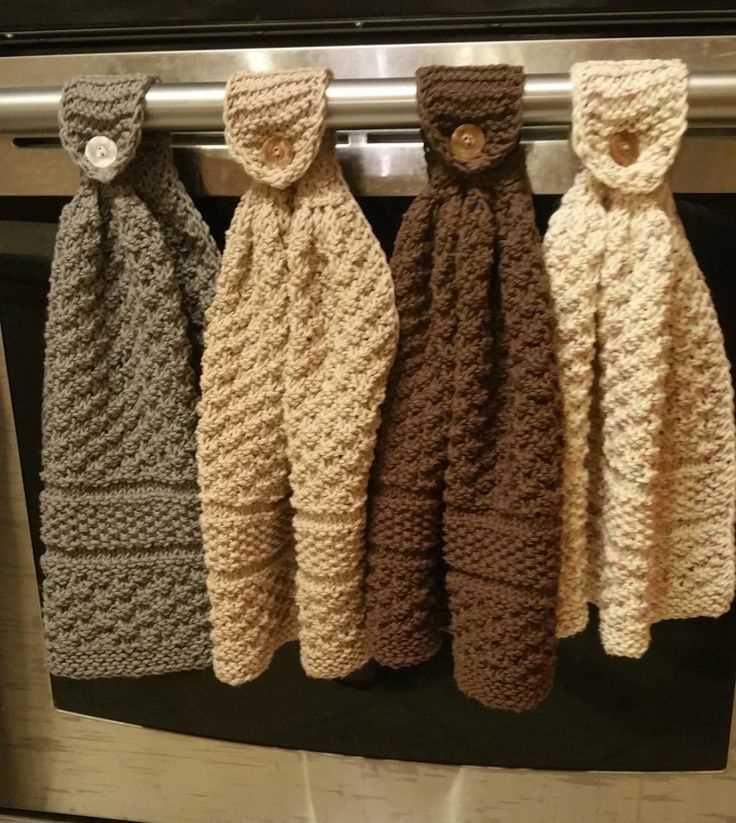
If you’re up for an advanced knitting challenge, try your hand at the intarsia placemats. This pattern allows you to create a picture or a design on your placemats using intarsia knitting techniques. The result is a set of unique and personalized placemats that will impress your guests.
For those who love to entertain, the lace napkin rings are a must-try advanced knitting pattern. This pattern combines lace knitting with beading techniques to create delicate and intricate napkin rings that will add a touch of elegance to any place setting.
As an experienced knitter, these advanced kitchen knitting patterns will push your skills to the next level and allow you to create beautiful and unique items for your kitchen. Whether you choose to tackle cable stitches, lace patterns, colorwork, or intarsia, these patterns will bring a new level of sophistication to your knitting projects.
Finishing Techniques for Kitchen Knitting Projects
Once you have completed your kitchen knitting project, it’s time to give it the finishing touches. The finishing techniques you choose can make a big difference in the final look and functionality of your project. Here are some helpful tips to help you achieve professional-looking results:
1. Blocking
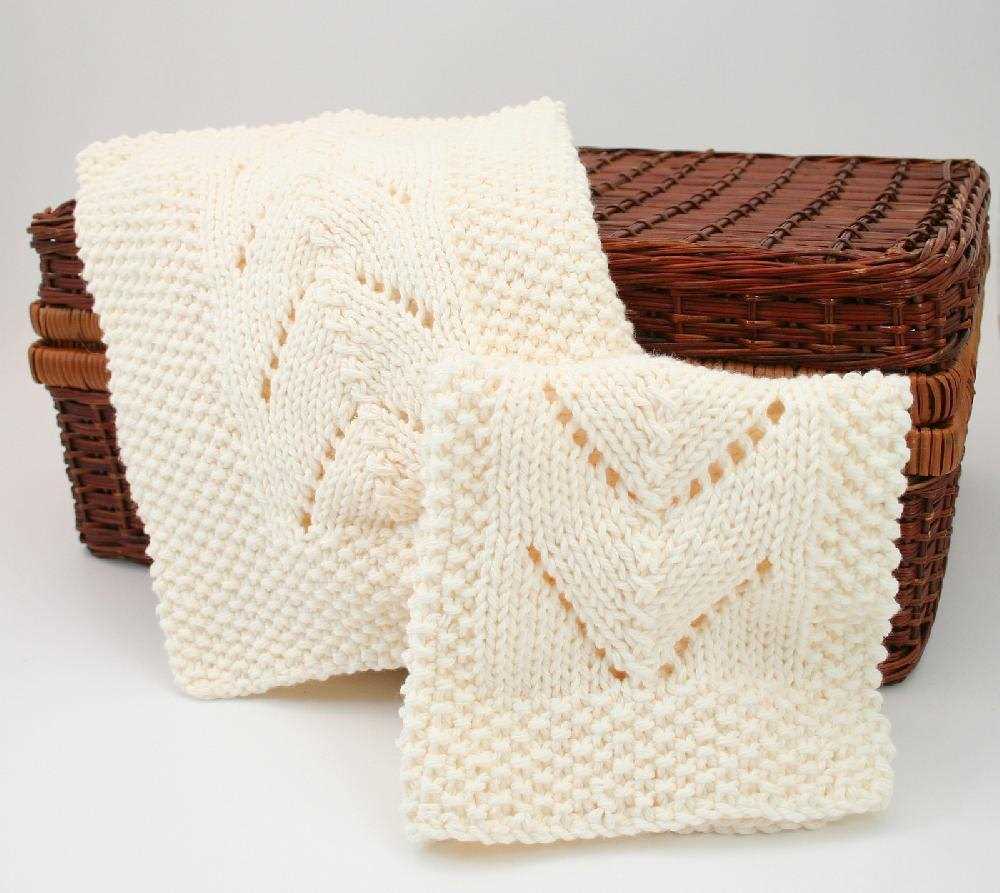
Blocking is the process of shaping and setting your knitted project to its desired dimensions. This step is especially important for items like dishcloths or potholders that need to lie flat. To block your project, dampen it with water and then stretch it to the desired shape. Use pins or blocking wires to hold it in place until it dries. This will help even out any inconsistencies and give your project a polished look.
2. Seam Finishing
When seaming your kitchen knitting projects, it’s important to use a finishing technique that is not only sturdy but also aesthetically pleasing. One popular method is the mattress stitch, which creates an invisible seam that lays flat. Another option is the whip stitch, which is quicker but leaves a visible seam. Choose the method that best suits your project and skill level.
3. Edging
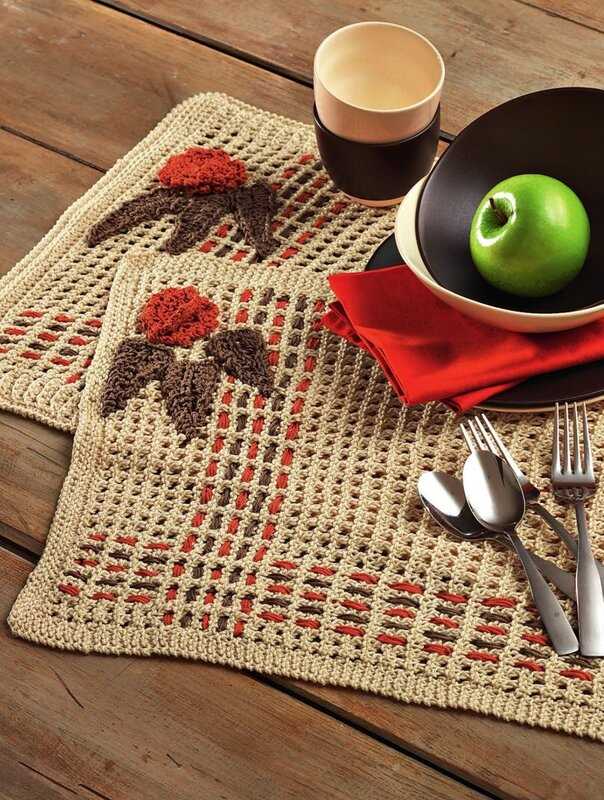
Adding an edging to your kitchen knitting projects can give them a polished and finished look. You can choose from a variety of edging options, such as a simple garter stitch border or a decorative picot edge. Experiment with different techniques to find the one that complements your project the best. Remember to always knit a few rows or rounds of your chosen edging before binding off to create a smooth transition.
4. Finishing Touches
Lastly, consider adding some finishing touches to make your kitchen knitting project truly unique. This could include embroidery or appliqué to add additional color and texture. You can also add buttons, ribbons, or other embellishments to personalize your project. Just be sure to secure any additional elements properly to ensure they stay in place during use.
By utilizing these finishing techniques, you can transform your kitchen knitting projects from homemade to professional-looking items. Remember to take your time and pay attention to detail, as the finishing touches can make all the difference. Happy knitting!